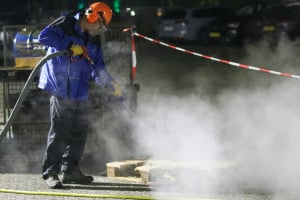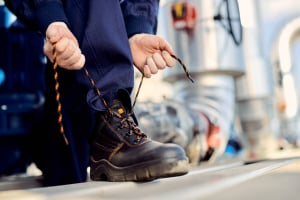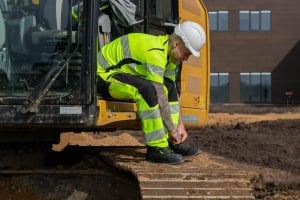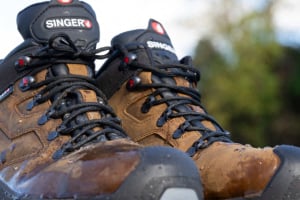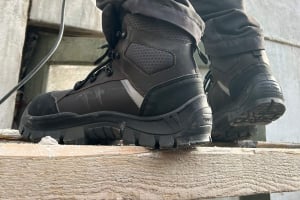
What personal protective equipment is required?
PPE: what is it?
Worker safety depends on their clothing, definition of PPE
Personal protective equipment or PPE: are, according to European Directive 89/686/EEC, defined as a means or device which will be held or worn by the person to protect them against one or more risks: falling objects, skin problems, burns, etc. Workers must have good protection against these risks that can reduce their productivity, PPE are protections so that they can carry out their work with the best possible safety . It should be noted that PPE is not, however, the only means of protecting employees in the context of their work.
PPE, an essential device
PPE helps keep employees safe from various hazards:
- Infrared rays
- Ionizing radiation
- Hazardous chemicals
- Molten Metal
- Fire
- Falling objects
- Fall
- Microbes
- Air pollution
- Cut
- Noise
Individual or collective protection?
The term PPE is defined as a means or device that will be held or worn by the person in order to protect them against one or more of these risks. It should be emphasized that it is the protection that is individual and not the equipment, as many people think.
What are the types of PPE?
There are various types of protective equipment that protects a specific part of the body:
- Head protection: helmet, forage cap
- Hearing protection: earmuffs, ear plugs
- Hand protection: gloves
- Foot protection: safety footwear with non-slip soles for example
- Eye protection: goggle
- Face protection: welding hoods
- Respiratory Protection: FFP1, FFP3, Full Face Mask
- Protections against falls from heights: harnesses, real safety systems fall arrest
What are the protection levels of PPE.
There are three main categories of personal protective equipment that represent the level of protection:
- Category 1 : protects the employee against all kinds of superficial attacks, both mechanical than those chemical or physical, which have been described as minor risks.
- Category 2 : includes serious attacks that can be physical, chemical or mechanical, as well as shocks that affect vital parts of the body and which are likely to cause irreversible damage.
- Category 3: protect the worker against mortal dangers, which are qualified as major risks.
PPE standards
To optimize the conditions of use, personal protective equipment must meet the standards specific security. Here are some of the standards by type of PPE, it is a non-exhaustive list.
Helmets:
- EN 352-3
- EN 166 (3B) EN 1731 (F)
- EN 397 (-30�C/+50�C, LD)
- ANSI/ISEA Z89.1 TYPE I (Class G)
Earplugs:
- EN 352
Protective glasses:
- EN 166
- EN 175
- EN 169.
Respiratory protection masks:
- EN 149 standard: FFP1 filtering respiratory masks
- EN 149 standard: FFP2 filtering respiratory masks
- EN 149 standard: FFP3 filtering respiratory masks
Protective gloves:
- EN 388: against mechanical risks.
- EN 374: against chemical risks.
- EN 407: against thermal risks.
Safety shoes:
- SB: for models with closed back or not, equipped with protective toe cap and resistant to abrasion and sliding.
- S1 : for those with closed back and equipped with antistatic properties and resistant to hydrocarbons.
- S1P : S1 standard and equipped with anti-perforation soles.
- S2 : S1 with presence of water repellent upper.
- S3 : S2 with presence of anti-perforation soles and studs.
- S4: S1 with water resistance.
- S5: S4 with presence of anti-perforation and water-resistant soles.
What are the 3 main means of protection?
In almost all sectors of activity, employees face dangers that can be minor or major risks, the employer must ensure the safety of his team. A true personal protector, PPE is necessary, even mandatory in many sectors of activity, so many employees use protective equipment. However, it is today impossible to qualify the 3 main means of universal protection for each profession, in fact each sector of activity encounters distinct risks. The only watchword to protect yourself and to have suitable work clothes as well as PPE that complies with the standards and requirements of the individual's daily professional activity.
Lifetime of PPE
The personal protective equipment stipulated by article R. 4321-4 of the labor code is provided free of charge by the employer.
Like all equipment, the personal protective equipment made available to workers has a lifespan to be taken into account, "an expiry date", which makes it possible to ensure the performance requirements over time for ensure employee safety. PPE in good condition is essential.
The employer, in addition to providing this personal protective equipment, is responsible for ensuring the periodic verification of the PPE. The frequency of PPE checks must be adapted to the constraints to which the PPE is subjected during its use. According to the EPI, this verification is imposed on the employer, according to the decree of March 19, 1993, O.J. of March 28, 1993.
Remember that PPE such as: headphones, or safety shoe, safety trainers must be completed with workwear : Work pants, work overalls, or more specific work clothes such as high visibility clothing.

